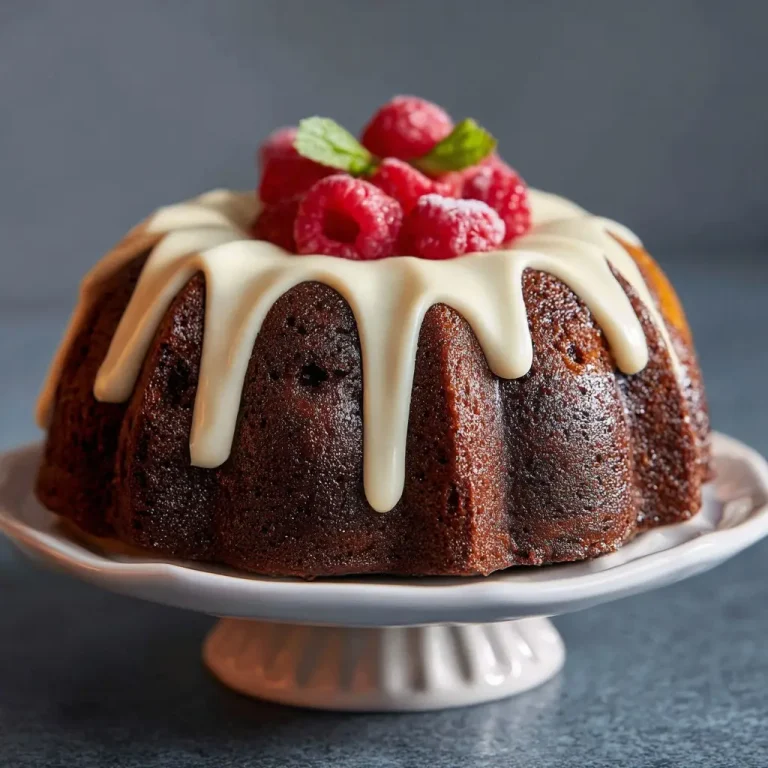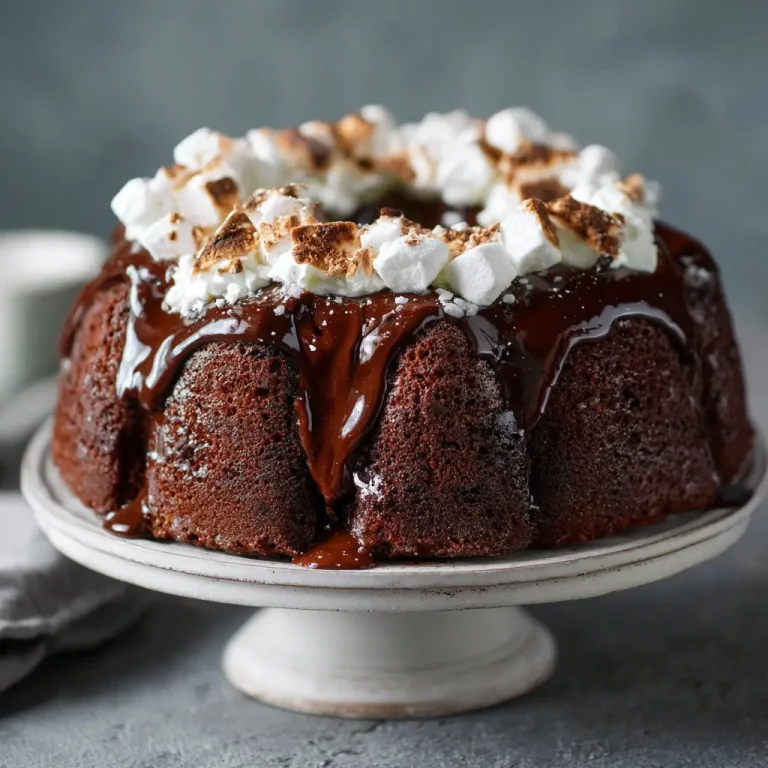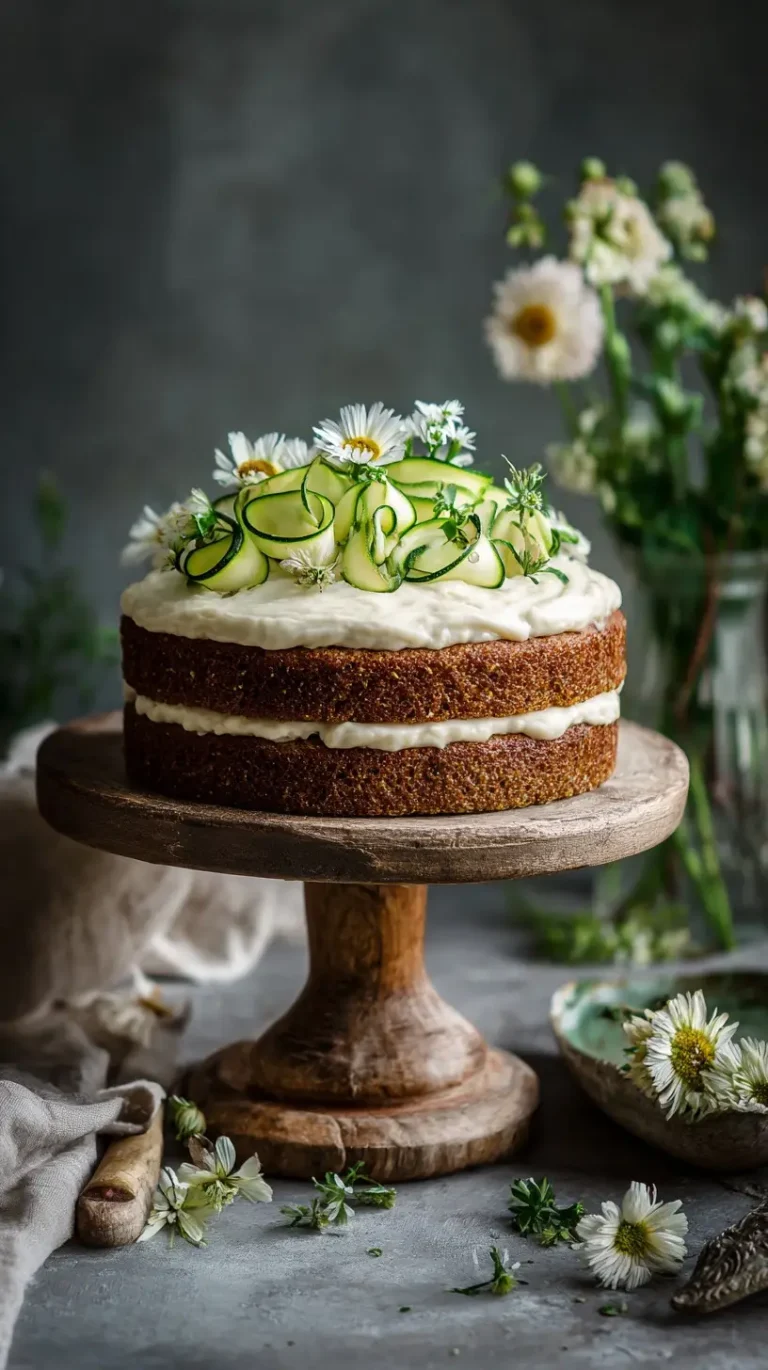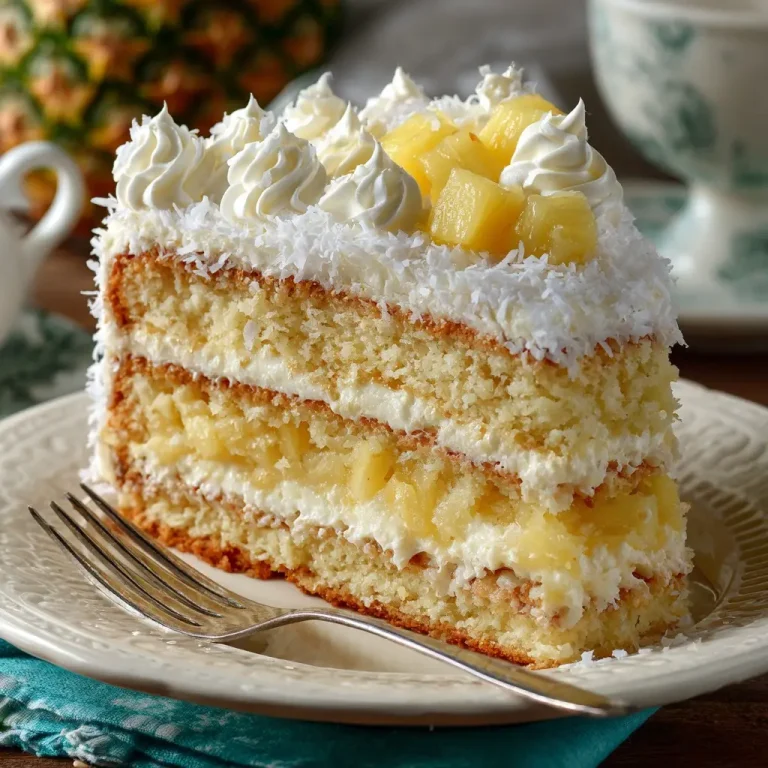Yellow Cake Recipe – Moist, Buttery, and Easy to Make at Home
Introduction
Yellow cake brings comfort, nostalgia, and timeless flavor to the table. Often the star of birthday celebrations, family gatherings, and bake sales, it has a soft, buttery crumb and a rich vanilla essence that speaks directly to the heart. Whether you enjoyed a slice at your grandmother’s table or picked one up at a corner bakery, chances are yellow cake has made an impression on your taste buds.
What sets yellow cake apart is its golden color and tender texture, both achieved by using whole eggs and butter as the foundation. The cake is incredibly versatile, ready to pair with chocolate frosting, fresh berries, or simply a dusting of powdered sugar. Home bakers return to this classic recipe again and again because it strikes the perfect balance between simplicity and indulgence.
If you’ve ever wondered how to make yellow cake from scratch that rivals a bakery version, you’re in the right place. This guide walks you through the ingredients, baking steps, customizations, and even how to serve it beautifully. With a little care and the right approach, anyone can turn everyday ingredients into something truly delightful.
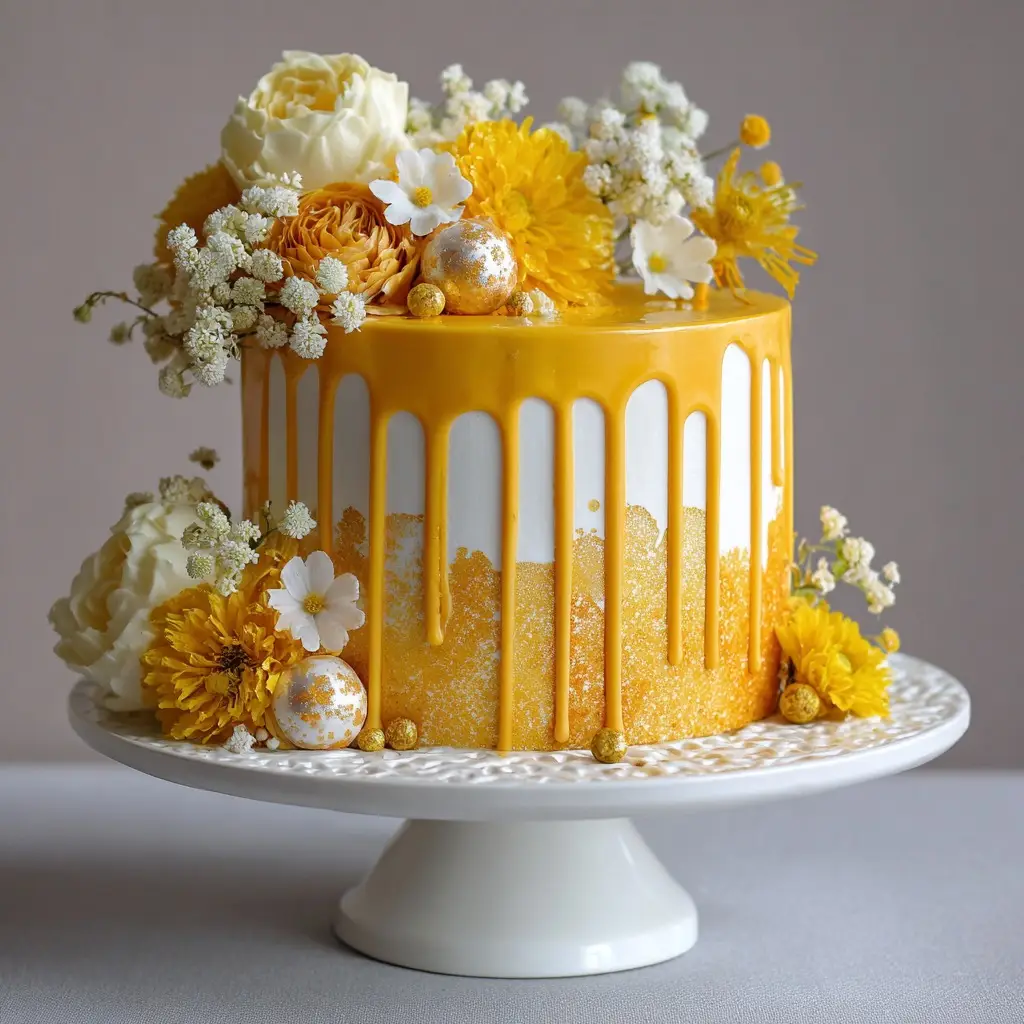
Ingredients Needed
Before diving into the process, gather all your ingredients. Each item plays a key role in creating the perfect texture and flavor. Here’s a breakdown of what you’ll need along with the approximate calorie count per ingredient to help you track nutritional intake.
| Ingredient | Quantity | Approximate Calories |
|---|---|---|
| All-purpose flour | 2 ½ cups | 1140 |
| Granulated sugar | 1 ¾ cups | 1350 |
| Unsalted butter | 1 cup (2 sticks) | 1600 |
| Whole eggs | 4 large | 320 |
| Whole milk | 1 cup | 150 |
| Baking powder | 2 ½ teaspoons | 5 |
| Salt | ½ teaspoon | 0 |
| Vanilla extract | 1 tablespoon | 40 |
Total calories for entire recipe: Approximately 4605
Calories per serving (based on 12 servings): Around 385
Step-by-Step Cooking Instructions
1. Prepare Your Equipment
Start by preheating your oven to 350°F. Grease two 9-inch round cake pans with butter or nonstick spray, then lightly dust with flour. For easier removal, you can also line the bottoms with parchment paper.
2. Cream the Butter and Sugar
In a large mixing bowl, cream the butter and sugar together until the mixture turns pale and fluffy. This step usually takes about five minutes with a hand mixer or stand mixer. Creaming is key because it incorporates air into the batter, which gives the cake its lift and softness.
3. Add the Eggs One at a Time
Crack in the eggs one at a time, mixing well after each addition. This helps maintain the emulsion in the batter and avoids curdling. Whole eggs give the cake its signature yellow color and richness.
4. Mix in Vanilla Extract
Pour in the vanilla extract and blend until evenly combined. Don’t skip this part—vanilla is what enhances the buttery base and gives yellow cake its classic flavor.
5. Combine the Dry Ingredients
In a separate bowl, whisk together the flour, baking powder, and salt. This ensures even distribution of leavening agents, helping the cake rise uniformly.For more delicious ideas, don’t miss Dulce de Leche Cake which pairs perfectly with this recipe.
6. Alternate Dry Ingredients and Milk
Add the flour mixture to the wet mixture in three batches, alternating with the milk. Start and end with the dry ingredients. Mix until just combined to avoid overworking the batter, which can make the cake dense.
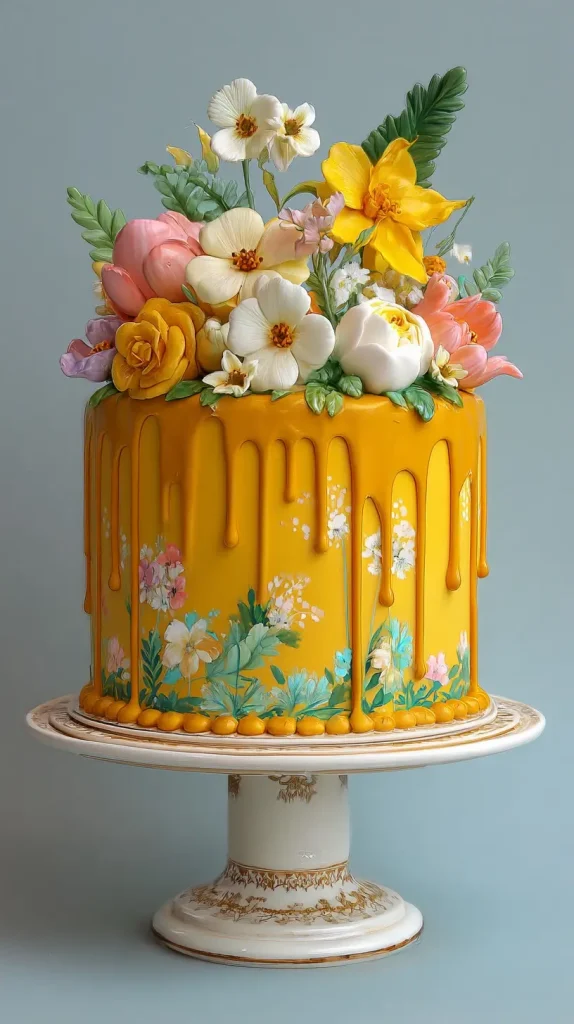
7. Divide and Bake
Evenly distribute the batter between the two prepared pans. Tap the pans gently on the counter to release air bubbles. Bake for 25 to 30 minutes, or until a toothpick inserted in the center comes out clean.
8. Cool the Cakes
Let the cakes cool in their pans for about 10 minutes. Then turn them out onto wire racks and let them cool completely before frosting or serving.
Tips for Customizing the Recipe
Yellow cake is a blank canvas, and that makes it easy to personalize. Try some of these ideas to make it your own:
- Add citrus zest: Lemon or orange zest adds brightness to the flavor.
- Swap milk for buttermilk: This gives the cake a subtle tang and more moisture.
- Use almond extract: Replace half the vanilla with almond extract for a nutty twist.
- Layer with jam or fruit: Add a layer of raspberry jam or sliced strawberries between cake layers.
- Turn it into cupcakes: Bake the batter in muffin tins for about 18 to 20 minutes.
These small changes can transform a classic into something truly unique and tailored to your taste.
Nutritional Information
Here is an approximate breakdown of the nutritional value per serving, assuming 12 equal slices:
- Calories: 385
- Total Fat: 21g
- Saturated Fat: 13g
- Cholesterol: 105mg
- Sodium: 180mg
- Carbohydrates: 45g
- Sugar: 28g
- Protein: 4g
- Fiber: 0.8g
This dessert is rich and meant to be enjoyed in moderation. Pairing it with fresh fruit or opting for a lighter frosting can help reduce the sugar load if desired.

Serving Suggestions
Yellow cake shines with many accompaniments. The most traditional pairing is with a thick layer of chocolate buttercream frosting. That sweet and slightly bitter contrast works beautifully with the buttery cake layers. For a lighter option, consider whipped cream and fresh berries.
You can also get creative with how it’s presented. Cut the cake into small squares and serve it as a part of a dessert platter. Turn it into a layered trifle with pudding and fruit. Or simply serve warm slices with a scoop of vanilla ice cream for a nostalgic finish.
For celebrations, dress it up with edible flowers, a drizzle of caramel, or decorative sprinkles. Its simple flavor allows for endless creativity.
Yellow Cake Recipe – Moist, Buttery, and Easy to Make at Home
Course: Blog12 slices
servings20
minutes30
minutes385
kcalIngredients
2 ½ cups all-purpose flour
1 ¾ cups granulated sugar
1 cup unsalted butter (2 sticks), softened
4 large eggs
1 cup whole milk
2 ½ teaspoons baking powder
½ teaspoon salt
1 tablespoon pure vanilla extract
Directions
- Preheat the oven to 350°F (175°C). Grease and flour two 9-inch round cake pans. Line the bottoms with parchment paper if desired.
- Cream butter and sugar in a large bowl using a mixer on medium speed for about 5 minutes, until light and fluffy.
- Add eggs one at a time, mixing well after each addition. Stir in vanilla extract.
- In a separate bowl, whisk together flour, baking powder, and salt.
- Alternate adding dry ingredients and milk to the butter mixture, starting and ending with the dry ingredients. Mix until just combined—do not overmix.
- Divide batter evenly between the two prepared pans. Tap pans lightly on the counter to remove air bubbles.
- Bake for 25 to 30 minutes, or until a toothpick inserted in the center comes out clean.
- Cool cakes in pans for 10 minutes, then turn out onto wire racks to cool completely before frosting or serving.
Recipe Video
Notes
- For extra flavor, add a teaspoon of almond extract or a bit of citrus zest. This cake pairs beautifully with chocolate frosting, whipped cream, or fresh fruit. If you’re planning to freeze it, wrap each layer tightly in plastic wrap and store for up to 2 months.
Frequently Asked Questions
Can I make yellow cake ahead of time?
Yes. You can bake the layers up to two days in advance. Wrap them tightly in plastic wrap and store at room temperature or refrigerate. You can also freeze them for up to two months.
What makes yellow cake different from white cake?
Yellow cake uses whole eggs and butter, while white cake uses only egg whites and sometimes shortening. This gives yellow cake a richer flavor and color.
Can I use oil instead of butter?
Butter is key for flavor in yellow cake. While oil can make the cake more moist, it lacks the depth of flavor butter provides. If you must substitute, use a neutral oil and consider adding an extra splash of vanilla.
Why is my yellow cake dry?
Overbaking or using too much flour can lead to dryness. Always measure flour correctly using the spoon-and-level method, and check for doneness a few minutes before the expected bake time.
Is yellow cake suitable for layering?
Absolutely. Its sturdy structure makes it perfect for layer cakes, whether filled with frosting, jam, or cream.
Conclusion
Few things in the world of baking match the pure joy of a homemade yellow cake. Its comforting aroma, soft texture, and classic flavor remind us why simple recipes often stand the test of time. Whether you’re baking for a birthday, a potluck, or just because you feel like treating yourself, yellow cake delivers.





